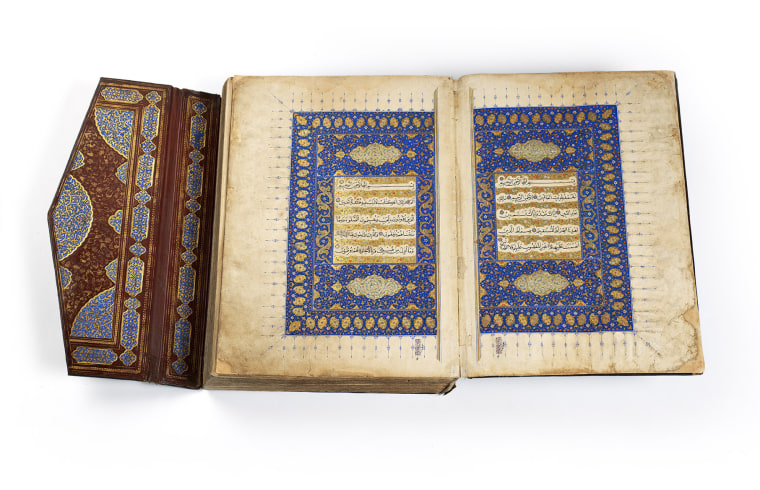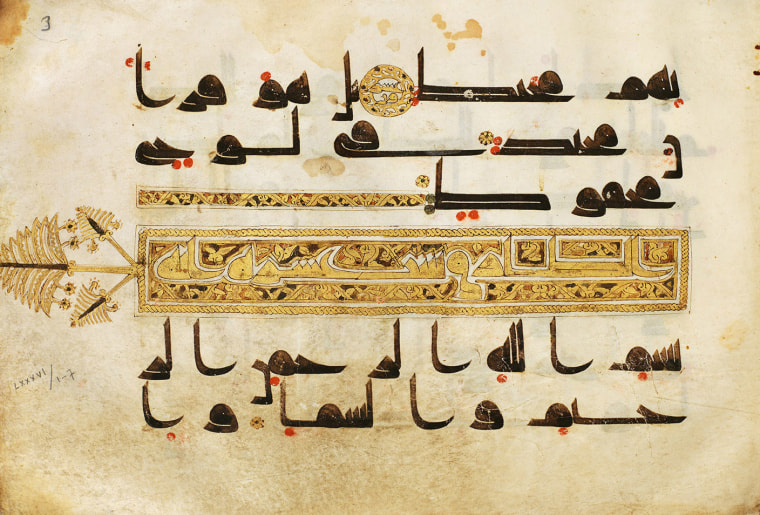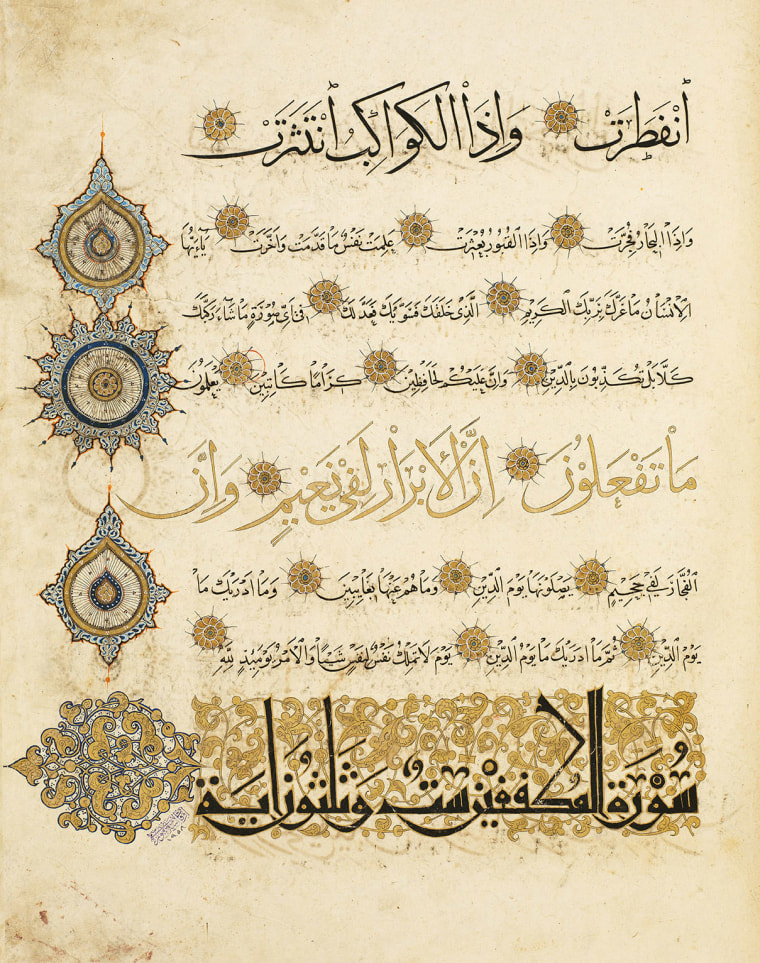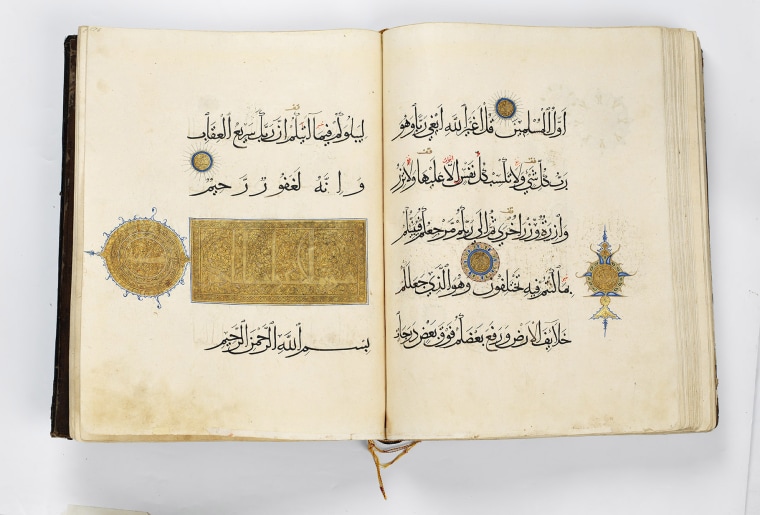When Massumeh Farhad traveled to Istanbul in 2010 to visit the Museum of Turkish and Islamic Art, she was “completely staggered” by its Quran exhibition.
Farhad, who is the chief curator at the Smithsonian’s Arthur M. Sackler Gallery and a curator of Islamic art, told NBC News that she made the initial trip for her own interest, but was so impressed with the exhibition that she urged the gallery’s director, Julian Raby, to see it for himself.
“It was a very casual conversation with our director, who said, ‘It would be wonderful to have something like this in Washington,’” she said. “And he said, ‘Why not?’ The rest is history.”

Although museum renovations delayed plans for the traveling exhibition, Washington, D.C., will showcase the Quran — the holy text of the Islamic religion — in the first-of-its-kind exhibition at the Smithsonian this October.
The exhibition will include the pieces from the Istanbul museum with pieces from its own collection from the Sackler and Freer Gallery of Art, which together constitute the Smithsonian’s museum of Asian art.
The Qurans of the exhibit represent a broad range of countries and eras, with the oldest dating to the late seventh or early eighth centuries. These pieces, which came from Damascus — at the time part of the Ottoman empire — are some of the earliest surviving Qurans in the world.

“Other than the very early folios that came from Damascus, we have examples from Iraq, from Afghanistan, from Iran, from Egypt, from Syria, and all of these were acquired by the Ottomans, whether through gift, acquisition, or looting. Then they were passed on,” said Farhad. “One of the reasons this was done is this was the transcription of the word of god but also Qurans, like the Torah, cannot be destroyed. Once it’s written, you have to keep it, even if you don’t use it.”
RELATED: America to Zanzibar' Exhibit Brings Muslim Cultures to New York City
This mandate has allowed Qurans to survive for centuries. One Quran, which was created in Baghdad in 1307 for the tomb of a Mongol leader, was taken by Sultan Soleiman in the early 16th century and brought to Istanbul, where it was passed down for generations.
“It’s interesting because you can sort of trace this journey — Baghdad to Sultania and then back to Istanbul — but it’s also visually spectacular,” Farhad said. “Relatively simple, but it’s truly majestic. Just page after page of huge letters in gold and black.”

Islam and the Quran are likely to be discussed in a presidential election season that has already seen anti-Islamic rhetoric. Farhad says that the exhibition is a chance to introduce the Quran in a different light.
“I think what [the exhibition] does offer at a time when a lot of attention is focused on the Islamic world, is to really show a different perspective and aspect of Islamic culture, and in particular, the Quran,” Farhad said. “[The Quran] is largely presented in a particular perspective, and we hope that this exhibition will offer a new way to look at these incredible manuscripts, at the variety of it and the richness of it, and a different perspective.”
Follow NBC Asian America on Facebook, Twitter, Instagram, and Tumblr.
